Abstract
Necropsy blood from cases diagnosed as dying from influenza A was examined for specific antibody in the IgG, IgA and IgM fractions and a specific diagnosis of recent infection was made if either IgM or IgA antibody and low titres of IgG antibody were found. By these criteria a diagnostic rate of 77% was found in those cases from whom no virus was isolated. The use of infected cell monolayers grown on polytetrafluoroethylene-coated slides gave a simple method of carrying out these antibody assays, and the use of necropsy blood did not require any special methods of transport of specimens to the virus laboratory.
Full text
PDF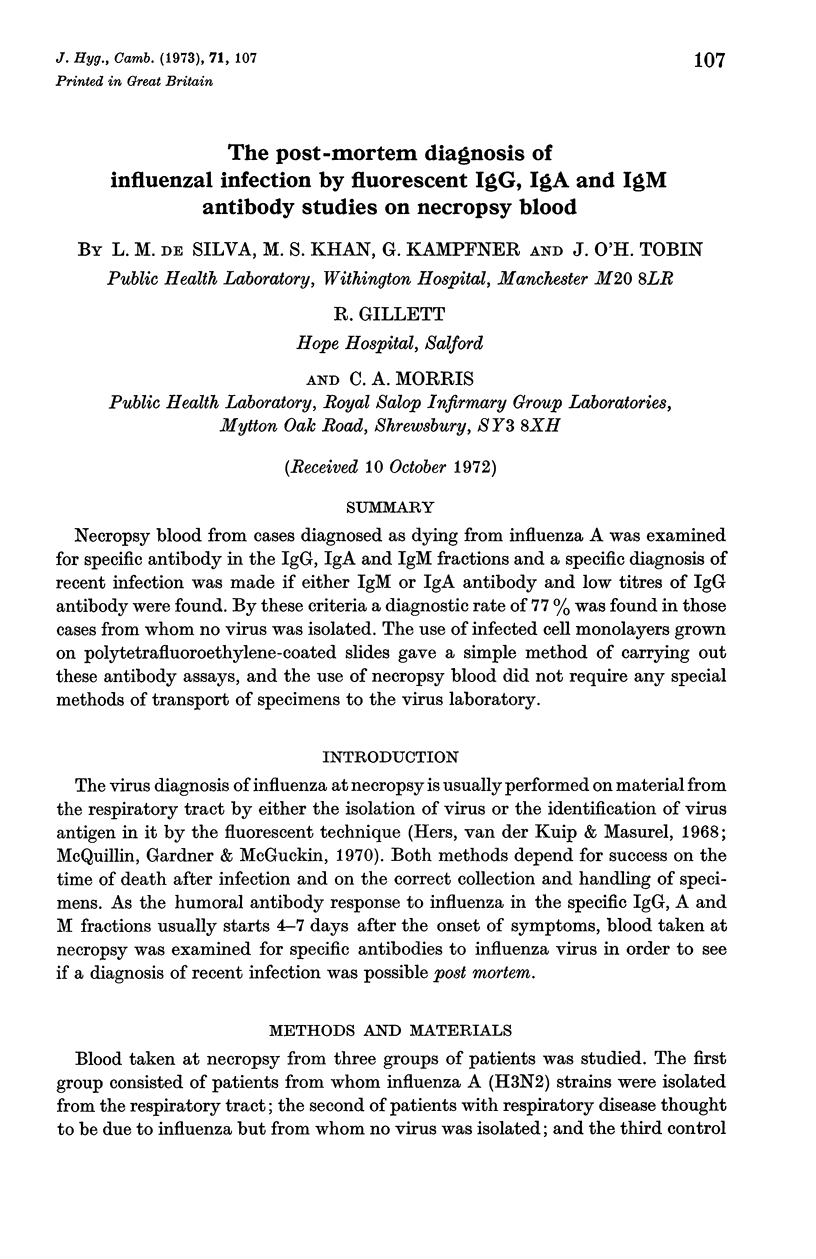
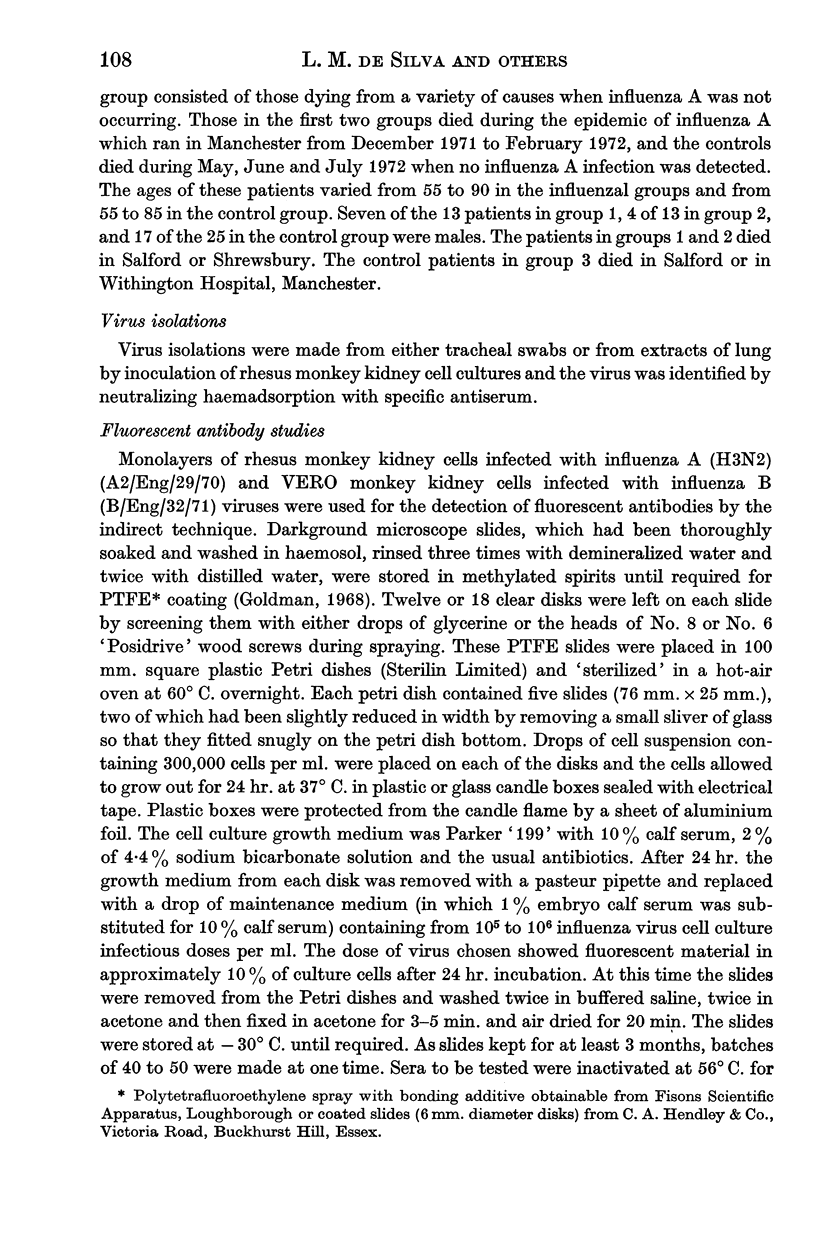
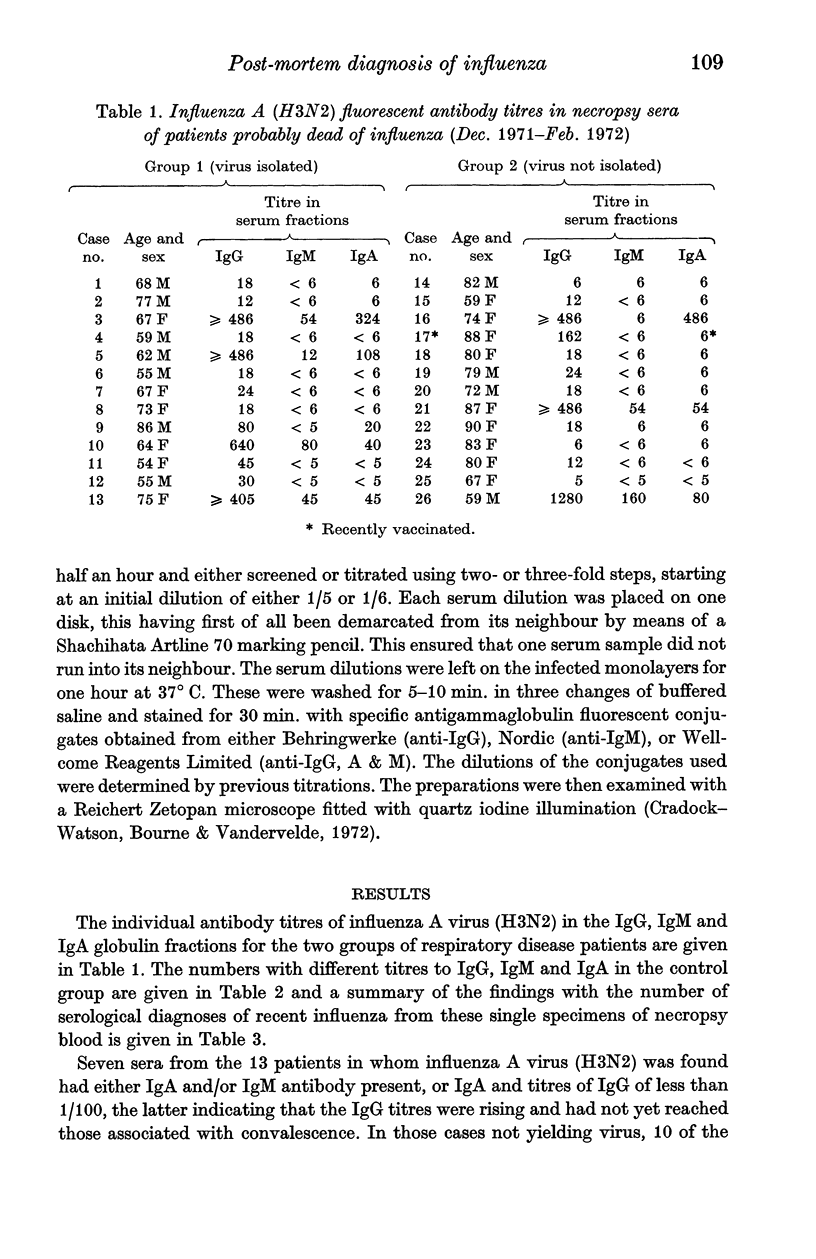
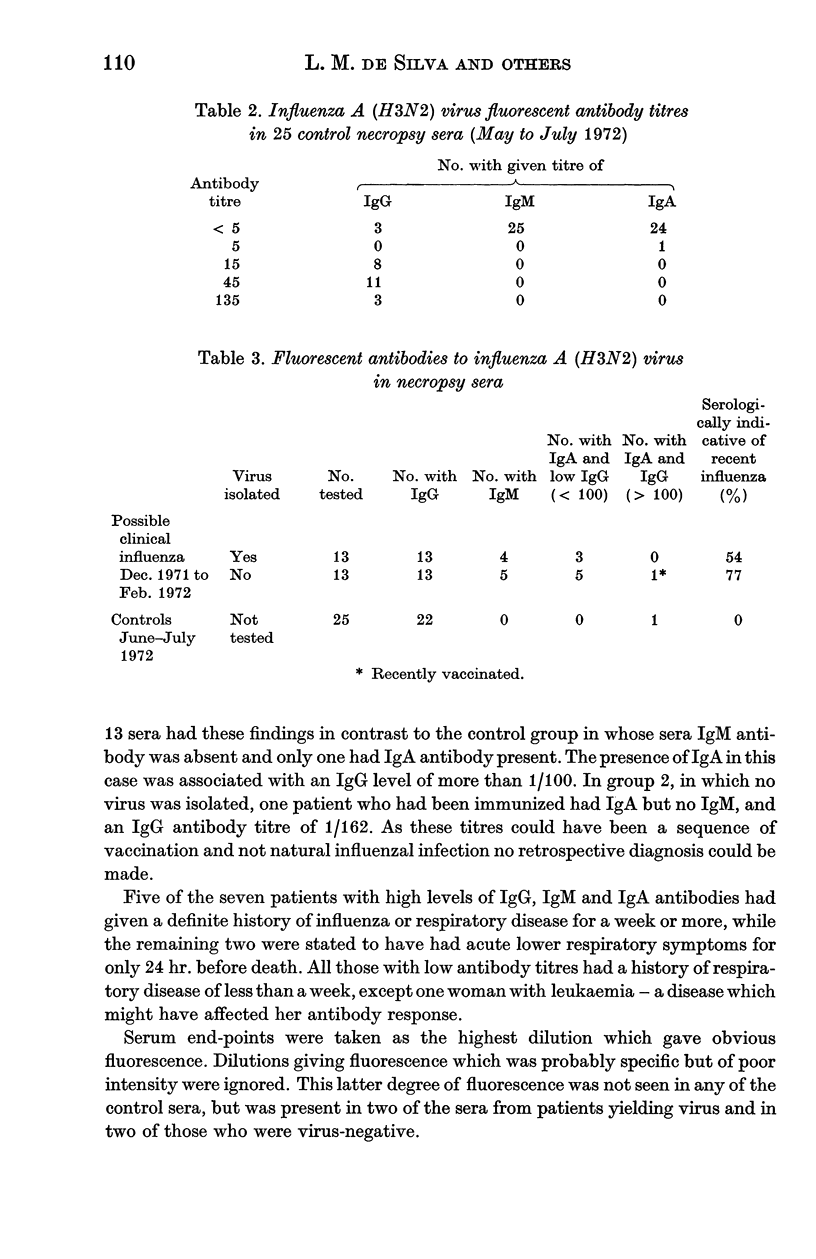
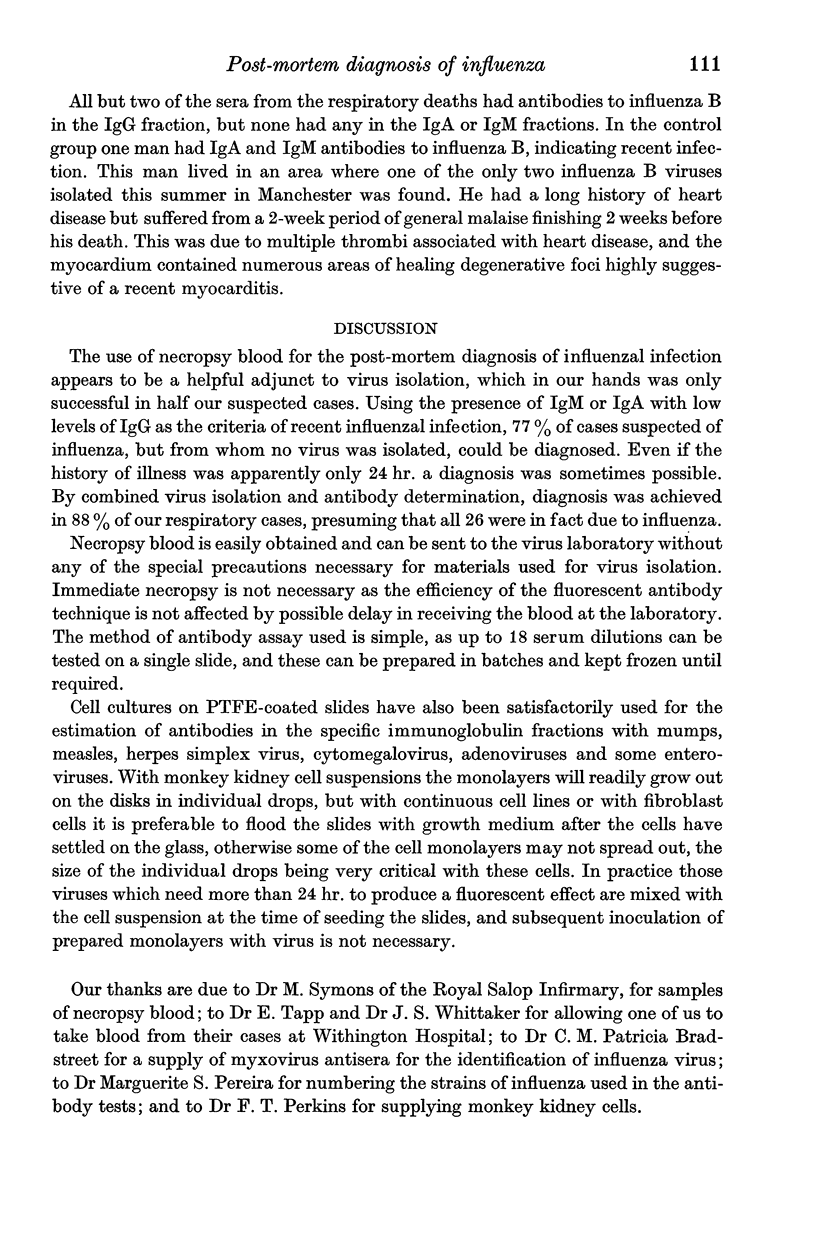
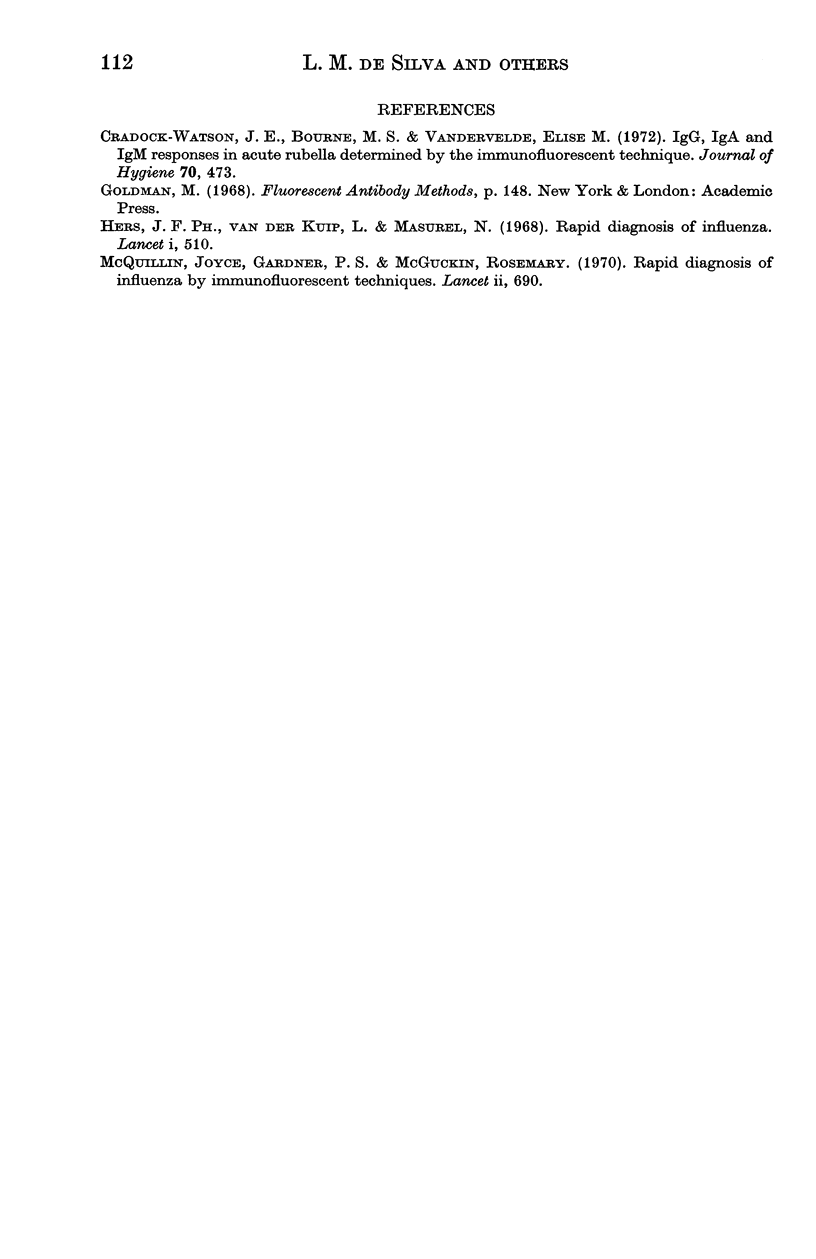
Selected References
These references are in PubMed. This may not be the complete list of references from this article.
- Cradock-Watson J. E., Bourne M. S., Vandervelde E. M. IgG, IgA and IgM responses in acute rubella determined by the immunofluorescent technique. J Hyg (Lond) 1972 Sep;70(3):473–485. doi: 10.1017/s0022172400063063. [DOI] [PMC free article] [PubMed] [Google Scholar]
- Hers J. F., van der Kuip L., Masurel N. Rapid diagnosis of influenza. Lancet. 1968 Mar 9;1(7541):510–511. doi: 10.1016/s0140-6736(68)91470-0. [DOI] [PubMed] [Google Scholar]
- McQuillin J., Gardner P. S., McGuckin R. Rapid diagnosis of influenza by immunofluorescent techniques. Lancet. 1970 Oct 3;2(7675):690–695. doi: 10.1016/s0140-6736(70)91961-6. [DOI] [PubMed] [Google Scholar]


